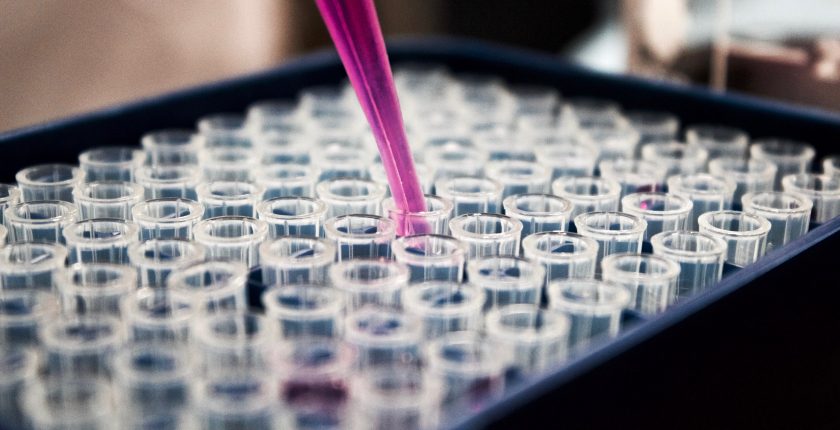Developing Access to Accurate Diagnosis Needed to Tackle Antimicrobial Resistance
Readjusting Global Attention Towards Tackling Antimicrobial Resistance
Tackling the current pandemic has pushed medical innovation beyond what was previously considered possible. The development of a vaccine in under one year is no small feat and to this day new treatments are continuously being developed and approved as an understanding of the virus deepens.
However, two years into the pandemic, health organisations are pushing to rebalance focus onto other global threats. This is because a continuous focus on simply ‘getting through’ the pandemic can impair efforts to mitigate against other future global medical crises. One of these key areas is the growing prevalence of antibiotic resistance illnesses.
One of the most well known and most commonly used antimicrobial medicine, antibiotics, was introduced over 80 years ago and have since saved millions of lives. However, its overuse as well as the overuse of other antimicrobial medicines, has led to the dangerous natural selection of antimicrobial-resistant bacteria. These bacteria are difficult or even impossible to defeat with current medicine. As such, even simple infections which were previously easy to treat can become major medical challenges. In most of these cases, antimicrobial-resistant (AMR) infections require expensive extended hospital stays and, in some cases, lead to death, especially where the patient has limited access to more expensive treatment. AMR already kills more than 750,000 people a year (Reactgroup, 2019) yet this number is also likely to be significantly higher as many cases are often not officially reported. Current forecasts 10 million deaths by 2050 if nothing more is done to tackle the problem.
AMR Disproportionately Threatens Sustainable Development in Lower-income Countries
The growing threat of AMR has been highlighted as one of the biggest medical challenges to global health, food security, and development. In May 2015, WHO developed a global action plan on AMR which included objectives such as improving awareness, optimise antimicrobial medicines, and strengthening surveillance.
Progress in line with these objectives has been made and antimicrobial resistance has levelled off in some high-income countries. However, AMR continues to rise in lower-income countries due to a combination of factors including less robust healthcare infrastructures, lack of regulation, and reduced access to higher quality antibiotics. This means that the disease burden on lower-income countries is disproportionately higher even as they often have fewer resources to tackle the problem. Similar to the impact of Covid-19, the impact of AMR is not limited to health but can also affects national economies. Here direct costs such as health care expenditures and indirect costs such as reduced productivity incur a financial expense on both the individual and accumulatively on national economies. As such the total economic cost of AMR is predicted to be as much as $10 trillion by 2050 worldwide. It is also predicted that low- and middle-income countries are more likely to be negatively impacted which would widen inequality between countries (WHO, 2017).
Accurate and Affordable Diagnosis Key to Tackling AMR
Current investments into AMR focus on developing new antibiotics that can treat drug-resistant bacteria. But experts have argued that this is a short-sighted and ultimately unsustainable effort stating that the source of the problem is how bacterial infections are diagnosed and treated. Essentially without correct diagnoses and consequently correct antibiotic prescriptions, strong antibiotics are used when alternatives would suffice. Developing new antibiotics without addressing how current diseases are diagnosed and treated would therefore only facilitate the continuation of AMR.
Higher use of antibiotics without diagnosis or prescription can be more common in many lower- or middle-income countries. This is because doctor’s visits, where illnesses can be correctly diagnosed, are sometimes costly or hard to access in rural areas. In these cases, it may be easier to buy antibiotics straight from pharmacies who are willing to sell without a prescription. In addition, antibiotics ‘wonder drug’ status means that antibiotics are more likely to be overused rather than used sparingly. The fallout of this is that strong antibiotics are prescribed for conditions that could treated with weaker antibiotics or even other medicines.
Apps and Awareness Building – an Example in Antibiogo by MSF
However, education and awareness-building activities concerning AMR are growing in many countries in Africa such as the student-driven initiative called Students Against Superbugs (SAS) Africa. This movement aims to mitigate the threat of AMR by empowering young people in Africa to lead advocacy campaigns and workshops. In addition, there are several projects aimed to increase access to accurate diagnosis including a newly developed app created by Médecins Sans Frontières (MSF) called Antibiogo. This free app makes information readily available for clinicians along with treatment recommendations. It helps guide health professionals towards diagnosing correctly without access to expensive equipment. This is done through sharing photos of petri dish results on the app and answering questions that generate a diagnosis. It is currently being trialled in Jordan, Mali, and Senegal. The aim is to make Antibiogo free of charge to health workers worldwide. Implementing projects such as Antibiogo and building awareness of the dangers of antibiotic overuse, are essential to tackle the potential threat of AMR. Learning from the global response to the onset of the current pandemic would also mean recognising that now is the time and the opportunity to plan and develop global society resilient towards AMR.
Bibliography
MSF,. (2021) Antibiogo, https://fondation.msf.fr/en/projects/antibiogo
WHO,. (9th June 2021) Record response to WHO’s call for antimicrobial resistance surveillance reports in 2020 https://www.who.int/news/item/09-06-2021-record-response-to-who-s-call-for-antimicrobial-resistance-surveillance-reports-in-2020
WHO, (2017) Antimicrobial Resistance https://www.euro.who.int/__data/assets/pdf_file/0005/348224/Fact-sheet-SDG-AMR-FINAL-07-09-2017.pdf
Ravelo, JL,. (29th April 2021) Treating antibiotic resistance: Need for diagnostics and AI https://www.devex.com/news/treating-antibiotic-resistance-need-for-diagnostics-and-ai-99737
Jerving, S,. (5th August 2021) The pharmacist’s role in fighting antimicrobial resistancehttps://www.devex.com/news/the-pharmacist-s-role-in-fighting-antimicrobial-resistance-100537
Waruingi,D,. (3rd July 2020) Priming students to be responsible professionals in the future https://www.studentsagainstsuperbugs.org/events/priming-students-to-be-responsible-professionals-in-the-future-students-against-superbugs-africa-conducts-a-training-on-antimicrobial-resistance-at-kenya-school-of-medical-sciences-and-technology-co/

